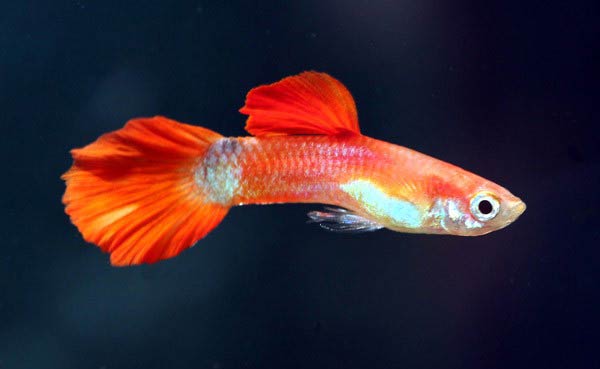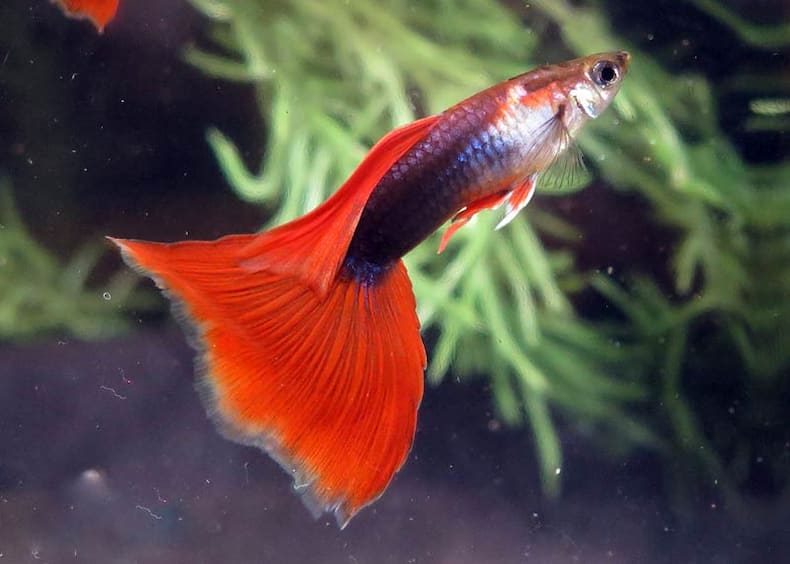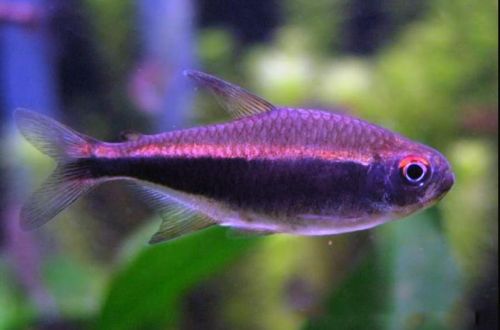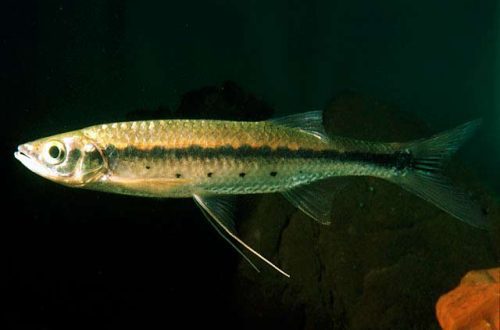
Red Guppies
Red Guppies or “Red Blond” Guppies, scientific name Poecilia reticulata (Red breed), belongs to the Poeciliidae family. The name indicates a characteristic feature of this breed – the predominance of red in color. The tail is colored uniformly, and the body (most often on the abdomen) can have silver, blue, turquoise and yellow colors.
Under this name, one of the varieties of Guppy albino or Guppy Moscow can also be supplied. She can be distinguished by her red eyes, the result of the absence of the black pigment melanin.
Brief information:
- The volume of the aquarium – from 40 liters.
- Temperature – 17-28°C
- Value pH — 7.0–8.5
- Water hardness – soft to high (10-30 dGH)
- Substrate type – any
- Lighting – moderate or bright
- Brackish water is permissible in a concentration of up to 15 g per 1 liter
- Water movement – light or moderate
- The size of the fish is 3–6 cm.
- Food – any food
- Temperament – peaceful
- Content alone, in pairs or in a group
Maintenance and care
They are a selection form from the common guppy, from which they inherited endurance and the ability to live in a wide variety of conditions, including brackish water. Successful maintenance will require clean water, quality food and peaceful neighbors.


Even a novice aquarist will not have problems with water treatment, since the hydrochemical composition of water is not essential for Red Guppies. It is enough to let the tap water settle (about a day) and it can be poured into the aquarium.
In a spacious aquarium with a small number of inhabitants, it is permissible not to use a filtration system. Subject to weekly replacement of part of the water with fresh water and removal of organic waste (feed residues, excrement). The heater can also be neglected, room temperature will be quite comfortable. The lighting system is selected based on the needs of living plants, if any.
Food. Accepts most dry, frozen and live foods of a suitable size. Many manufacturers produce special food for Guppy, so there are no problems with the choice.
behavior and compatibility. Peaceful friendly fish. They get along well with most other species of comparable size and temperament. There are no intraspecific conflicts. Males compete with each other, but it does not come to aggression.





